Themed collection Most popular 2023 inorganic chemistry articles

Main group metal-mediated strategies for C–H and C–F bond activation and functionalisation of fluoroarenes
This Perspective showcases recent advances on the use of specially designed main-group metal complexes to facilitate chemoselective C–H/C–F functionalisation of fluoroarenes.

Chem. Sci., 2023,14, 11617-11628
https://doi.org/10.1039/D3SC03548D
Metallated dihydropyridinates: prospects in hydride transfer and (electro)catalysis
Hydride transfer (HT) is a fundamental step in a wide range of reaction pathways, including those mediated by dihydropyridinates (DHP−s).
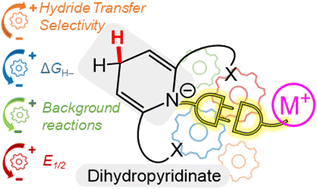
Chem. Sci., 2023,14, 8234-8248
https://doi.org/10.1039/D3SC02080K
Back to the future of organolanthanide chemistry
By taking inspiration from the structures and reactivities of its past, organolanthanide chemistry has managed to reinvent itself for the challenges of today and the future.

Chem. Sci., 2023,14, 443-457
https://doi.org/10.1039/D2SC05976B
Progress in the chemistry of molecular actinide-nitride compounds
This review covers the rapid progress that was made over the past decade in the chemistry of actinide nitrides with a focus on uranium terminal and bridging nitrides, their synthesis and reactivity, and a few recent breakthroughs with thorium.
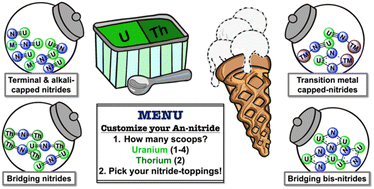
Chem. Sci., 2023,14, 6493-6521
https://doi.org/10.1039/D3SC01435E
Metal complexes for catalytic and photocatalytic reactions in living cells and organisms
This review presents discrete metal complexes that catalyse or photocatalyse reactions within living cells or living organisms.
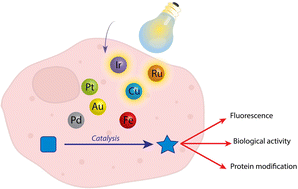
Chem. Sci., 2023,14, 409-442
https://doi.org/10.1039/D2SC05672K
Rapid, iterative syntheses of unsymmetrical di- and triarylboranes from crystalline aryldifluoroboranes
A facile synthesis of aryldifluoroboranes, ArBF2, is reported, which allows for their isolation and use as synthons for unsymmetrical boranes.

Chem. Sci., 2023,14, 14256-14261
https://doi.org/10.1039/D3SC05071H
Thermally activated delayed fluorescence in a deep red dinuclear iridium(III) complex: a hidden mechanism for short luminescence lifetimes
Thermally activated delayed fluorescence (TADF) is found to play an important role in accelerating the rate of radiative decay in luminescent iridium(III) complexes, shown in this instance for dinuclear complexes formed with high stereoselectivity.

Chem. Sci., 2023,14, 13934-13943
https://doi.org/10.1039/D3SC04450E
Fast and scalable solvent-free access to Lappert's heavier tetrylenes E{N(SiMe3)2}2 (E = Ge, Sn, Pb) and ECl{N(SiMe3)2} (E = Ge, Sn)
Lappert's heavier tetrylenes E{N(SiMe3)2}2 (E = Ge, Sn, Pb) have been efficiently prepared from GeCl2·(1,4-dioxane), SnCl2 or PbCl2 and Li{N(SiMe3)2} via a completely solvent-free one-pot mechanochemical route followed by sublimation.

Chem. Sci., 2023,14, 12477-12483
https://doi.org/10.1039/D3SC02709K
Reversible C–H bond silylation with a neutral silicon Lewis acid
A perfluorinated bis(ortho-amidophenolato)silane combined with a bulky Lewis base enables the first neutral silicon Lewis acid mediated C–H bond silylation. It can be reversed upon adding a donor and modulates the follow-up chemistry with electrophiles.

Chem. Sci., 2023,14, 11237-11242
https://doi.org/10.1039/D3SC03488G
Selective synthesis of germasila-adamantanes through germanium–silicon shift processes
Substoichiometric amounts of Ph3C[B(C6F5)4] transform selectively oligocyclic germasilanes via sila-Wagner–Meerwein rearrangements into the thermodynamically most stable germasila-adamantanes with the germanium atoms in the bridgehead positions.

Chem. Sci., 2023,14, 8956-8961
https://doi.org/10.1039/D3SC03301E
Bidirectional photoswitchability in an iron(III) spin crossover complex: symmetry-breaking and solvent effects
Two solvates, one showing symmetry-breaking spin crossover and bidirectional photoswitchability from a [HS-LS] state, are reported.

Chem. Sci., 2023,14, 7185-7191
https://doi.org/10.1039/D3SC01495A
Scrutinizing formally NiIV centers through the lenses of core spectroscopy, molecular orbital theory, and valence bond theory
Nickel K- and L2,3-edge X-ray absorption spectra (XAS) are discussed for coordinated nickel centers spanning formal oxidation states from II to IV. The ensuing analysis indicates that a physical “+4” oxidation state is untenable for coordinated Ni.

Chem. Sci., 2023,14, 6915-6929
https://doi.org/10.1039/D3SC02001K
Highly efficient light harvesting of a Eu(III) complex in a host–guest film by triplet sensitization
Very high photoluminescence intensity of a Eu(III) complex is achieved using a host–guest system. The intensity is 400 times larger than that of the Eu(III) complex itself.
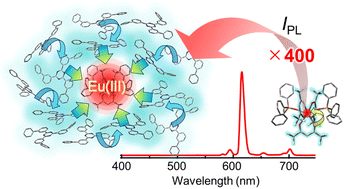
Chem. Sci., 2023,14, 6867-6875
https://doi.org/10.1039/D3SC01817B
Replacing the BO in BODIPY: unlocking the path to SBDIPY and BIDIPY chromophores
Synthesis, characterisation, and investigation of the luminescence features of a new class of chromophores: SBDIPY and BIDIPY.
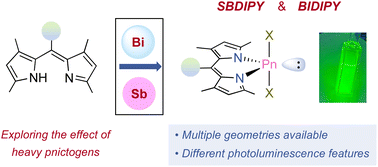
Chem. Sci., 2023,14, 6579-6584
https://doi.org/10.1039/D3SC01493B
Controlled reductive C–C coupling of isocyanides promoted by an aluminyl anion
Controlled addition of isocyanides R-NC to a potassium aluminyl afforded the C2- and C3- homologized products.

Chem. Sci., 2023,14, 6278-6288
https://doi.org/10.1039/D3SC01387A
Taming the parent oxoborane
Addition of water to a 3c–2e boron gallium hydrido compound results in capturing of the parent oxoborane moiety, B(H)![[double bond, length as m-dash]](https://www.rsc.org/images/entities/char_e001.gif) O. The latter reacts with another molecule of water to give a boracarboxylic acid derivative.
O. The latter reacts with another molecule of water to give a boracarboxylic acid derivative.

Chem. Sci., 2023,14, 5894-5898
https://doi.org/10.1039/D3SC01544K
A crystalline T-shaped planar group 14 anion
Herein, we report the synthesis, characterization, and reactivity of the first crystalline T-shaped planar group 14 anion.

Chem. Sci., 2023,14, 5722-5727
https://doi.org/10.1039/D2SC07006E
Magnetic hysteresis and large coercivity in bisbenzimidazole radical-bridged dilanthanide complexes
Unprecedented bisbenzimidazole (Bbim)3−˙ radical-bridged dilanthanide complexes were isolated where the dysprosium congener features magnetic memory effect and the second highest coercive field for any organic radical-bridged dinuclear compound.
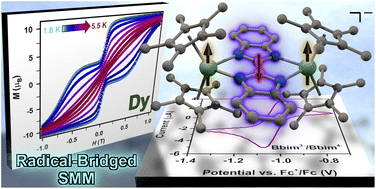
Chem. Sci., 2023,14, 5577-5592
https://doi.org/10.1039/D3SC01562A
On the existence of low-valent magnesium–calcium complexes
While low-valent β-diketiminate complexes with a Mg–Mg bond are well-established, similar Ca–Ca bound complexes were hitherto too reactive to be isolated. Herein we discuss the possible formation of low-valent heterobimetallic Mg–Ca complexes.

Chem. Sci., 2023,14, 4724-4734
https://doi.org/10.1039/D3SC00909B
Catalyst-free diboration and silaboration of alkenes and alkynes using bis(9-heterofluorenyl)s
9-Borafluorene-based diboranes and silylboranes spontaneously add to C![[double bond, length as m-dash]](https://www.rsc.org/images/entities/char_e001.gif) C or C
C or C![[triple bond, length as m-dash]](https://www.rsc.org/images/entities/char_e002.gif) C bonds. Despite their different charge and bond polarization, key orbital interactions of substrate activation are identical for both valence isoelectronic derivatives.
C bonds. Despite their different charge and bond polarization, key orbital interactions of substrate activation are identical for both valence isoelectronic derivatives.
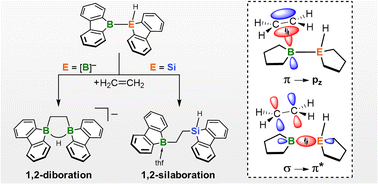
Chem. Sci., 2023,14, 4589-4596
https://doi.org/10.1039/D3SC01395B
Binding of exogenous cyanide reveals new active-site states in [FeFe] hydrogenases
Binding of exogenous cyanide to the active site H-cluster in [FeFe] hydrogenase stabilizes new active-site states with an overoxidized diiron cofactor showing how σ-donor/π-acceptor interactions influence the electronic structure of metallocofactors.
![Graphical abstract: Binding of exogenous cyanide reveals new active-site states in [FeFe] hydrogenases](/en/Image/Get?imageInfo.ImageType=GA&imageInfo.ImageIdentifier.ManuscriptID=D2SC06098A&imageInfo.ImageIdentifier.Year=2023)
Chem. Sci., 2023,14, 2826-2838
https://doi.org/10.1039/D2SC06098A
Dynamic effects on ligand field from rapid hydride motion in an iron(II) dimer with an S = 3 ground state
Crystallographic, spectroscopic, and computational studies on diiron(II) hydride complexes reveal rapid hydride motions that cause major changes in the electronic structures of the iron sites.
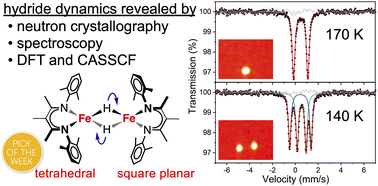
Chem. Sci., 2023,14, 2303-2312
https://doi.org/10.1039/D2SC06412J
An easy-to-perform evaluation of steric properties of Lewis acids
An easy-to-perform approach to assess and quantify steric properties of Lewis acids is reported. The novel LAB-Rep model (Lewis acid/base repulsion model) is introduced, which judges steric repulsion in Lewis acid/base pairs.
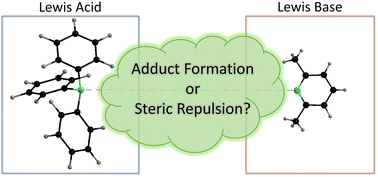
Chem. Sci., 2023,14, 2275-2288
https://doi.org/10.1039/D3SC00037K
Nickel boryl complexes and nickel-catalyzed alkyne borylation
Nickel bis-boryl complexes cis-[Ni(NHC)2(Bcat)2], cis-[Ni(NHC)2(Bpin)2] and cis-[Ni(NHC)2(Beg)2] are presented and the nickel-catalyzed alkyne borylation is reported.

Chem. Sci., 2023,14, 2215-2228
https://doi.org/10.1039/D2SC04690C
Merging the Norrish type I reaction and transition metal catalysis: photo- and Rh-promoted borylation of C–C σ-bonds of aryl ketones
Synthesis of arylboronates via borylation of C–C σ-bonds of aryl ketones was achieved by the combined use of photoenergy and a Rh catalyst.

Chem. Sci., 2023,14, 1960-1965
https://doi.org/10.1039/D2SC06801J
A mitochondria-localized iridium(III) photosensitizer for two-photon photodynamic immunotherapy against melanoma
An iridium(III) two-photon photosensitizer was demonstrated to effectively trigger melanoma cell death by a combination of ferroptosis and ICD, and also cause the systemic induction of an immune response.
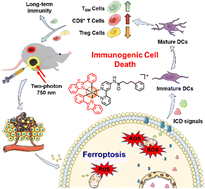
Chem. Sci., 2023,14, 1461-1471
https://doi.org/10.1039/D2SC06675K
Regioselectivity of concerted proton–electron transfer at the surface of a polyoxovanadate cluster
Introduction of a surface defect on a POV-alkoxide imparts both structural and electronic alterations, resulting in “switchable” PCET regiochemistry. Such features provide insight into PCET reactivity at metal oxide surfaces.
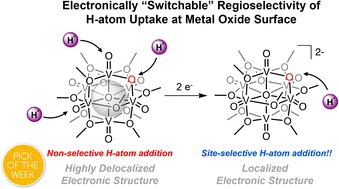
Chem. Sci., 2023,14, 1386-1396
https://doi.org/10.1039/D2SC05928B
Synthesis and characterization of bi(metallacycloprop-1-ene) complexes
Well-defined metallacycloprop-1-ene complexes have only previously been isolated with a metal center bearing one vinyl moiety. We have successfully obtained the first examples of structurally characterized spiro bi(metallacycloprop-1-ene) complexes.
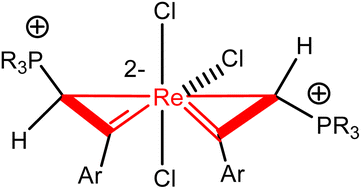
Chem. Sci., 2023,14, 96-102
https://doi.org/10.1039/D2SC05378K
An exchange coupled meso–meso linked vanadyl porphyrin dimer for quantum information processing
A combined EPR and DFT study of a suitably designed vanadyl-porphyrin dimer revealed promising properties for quantum information processing applications, such as single qubit addressability and relevant intramolecular exchange interactions.
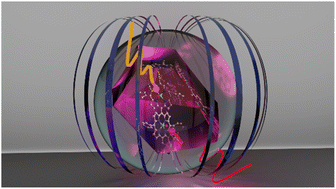
Chem. Sci., 2023,14, 61-69
https://doi.org/10.1039/D2SC04969D
About this collection
This specially curated collection pulls together some of the most popular articles from 2023 in the fields of main group, inorganic and organometallic chemistry. The collection presents some outstanding contributions to the field, ranging from metal photosensitizers to organolanthanide chemistry, and as with all Chemical Science articles – they are all completely free to access and read. We hope you enjoy browsing through this collection.
If a particular article has inspired you, do feel free to share on social media using the buttons on each article landing page and use our hashtag: #ChemSciMostPopular